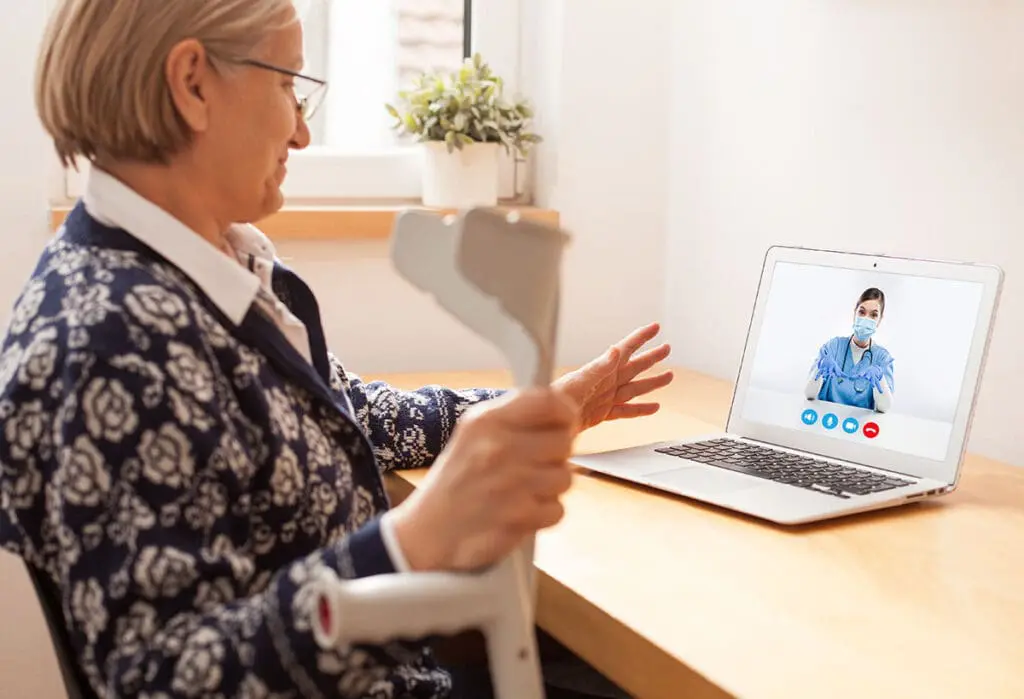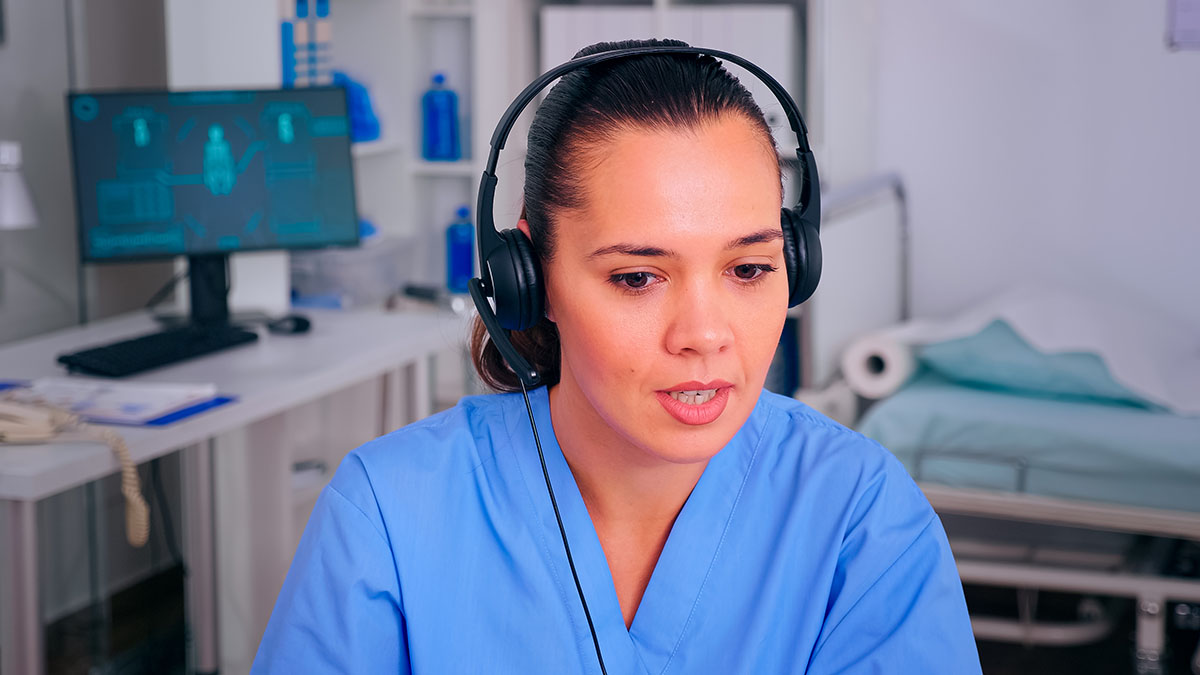Virtual Doctor Appointments
In an era where convenience is king over best care, the healthcare industry has evolved to bring medical consultations into the digital age through virtual doctor appointments, sometime referred to as telehealth. Telehealth, or virtual consultations, has put your health care provider online and dismantled geographical barriers, making it easier than ever to access healthcare services. As we navigate through the advantages and the how-tos of telehealth care, let’s dive into what it means for patients and healthcare providers alike.
Telehealth will never do away with the doctor’s office, but it certainly makes it convenient for doctors for a telehealth visit!

What is telehealth and how does it work?
Telehealth appointments allow patients to consult and talk with healthcare providers over the internet, using a phone, tablet, or computer. These virtual visits can include consultations, follow-up appointments, and in some cases, therapy sessions. The process is straightforward: once you book an appointment, you’ll receive instructions on how to connect with your healthcare provider using a secure platform.

What are the benefits of telehealth and online doctor visits?
The benefits of telehealth are vast. For starters, it significantly reduces the need to travel, making it a godsend for patients living in remote areas or those with mobility issues. It also minimizes waiting times and can be more cost-effective. Furthermore, telehealth appointments can help in the management of chronic diseases by making it easier for patients to maintain regular contact with their healthcare service providers.

Should I see a doctor in-person or online?
Choosing between an in-person or online doctor’s appointment depends on several factors. While telehealth is excellent for consultations and follow-ups, some situations require a physical examination. It’s always best to consult with your healthcare or insurance provider on the most appropriate method for your specific health needs.
Getting Comfortable with Telehealth: A Comprehensive Guide
Telehealth has become an indispensable part of modern healthcare, offering convenience and continuity of care from the comfort of your home. Transitioning to telehealth might feel daunting at first, but with the right preparation, you can maximize the benefits of your virtual healthcare experience. Here’s how you can become more comfortable with telehealth:
1. Familiarize Yourself with the Technology
- Test Your Equipment: Prior to your appointment, ensure your computer, tablet, or smartphone is working correctly. Test your device’s camera and microphone, as these are crucial components of a successful telehealth visit.
- Understand the Platform: Become acquainted with the telehealth platform or app your healthcare provider uses. Many providers offer tutorials or guidance on how to navigate their systems. Familiarity with the platform can help alleviate technical worries during the appointment.
- Internet Connectivity: Ensure you have a stable internet connection. Weak or unstable connections can lead to disrupted sessions, affecting the quality of care you receive.
2. Prepare for Your Appointment
- List Your Symptoms and Concerns: Write down any symptoms you’re experiencing, along with their onset. Also, list any questions or concerns you have for your healthcare provider. Being prepared will help you make the most of your appointment time.
- Have your Medical History Handy: If you’re meeting with a healthcare provider for the first time via telehealth, have a summary of your medical history available, including any current medications, past surgeries, and chronic conditions.
- Set Goals: Consider what you want to achieve from the telehealth visit, such as obtaining a diagnosis, a prescription refill, or medical advice. Communicating your goals upfront can lead to a more effective consultation.
3. Create a Conducive Environment
- Find a Private Space: Privacy is paramount during telehealth visits to ensure confidentiality and to feel comfortable discussing personal health issues. Choose a quiet, private space where you won’t be disturbed.
- Ensure Good Lighting and a Clean Background: Make sure the space is well-lit so that your healthcare provider can see you clearly. A neutral and tidy background can minimize distractions during the call.
- Minimize Interruptions: Inform others in your household of your appointment to avoid interruptions. Turn off notifications or set your device on Do Not Disturb mode, except for the call with your provider.
4. Practice Good Communication
- Speak Clearly: Since you’re not in the same room, clear communication is key. Speak clearly and concisely, making sure to articulate your concerns and questions.
- Take Notes: Have a pen and paper ready or use a digital device to take notes during your appointment. This can help you remember the provider’s advice and follow-up steps.
5. Embrace the Advantages
- Review the Benefits: Telehealth offers numerous benefits such as saving time on commutes, reducing exposure to illnesses, and the convenience of accessing healthcare from anywhere. Keeping these advantages in mind can help you appreciate and become more comfortable with the telehealth process.
Becoming comfortable with telehealth involves a mix of preparation, technology familiarization, and creating the right environment for your appointment. By following these tips, you can embrace telehealth as a valuable tool in your healthcare journey.
Remember, it’s normal to feel a bit apprehensive about new experiences, including telehealth. With time and practice, you’ll likely find it a convenient and effective way to access healthcare.
Can the provider prescribe medication?
Yes, during a telehealth appointment, your healthcare provider can prescribe medication or a prescription refill. These prescriptions for medicine can often be sent directly to your pharmacy, making the process seamless and efficient.

Should I use my phone, tablet, or computer for my telehealth appointment?
The choice between a phone, tablet, video, or computer for your telehealth appointment comes down to personal preference and device availability. Ensure that whichever device you choose has a reliable internet connection and supports the telehealth platform being used.
Visit Checklist
Use the following checklist to help your virtual visit go smoothly:
- Test Your Technology: Ensure your device’s camera, microphone, and internet connection are functioning correctly.
- Create a Comfortable Setup: Choose a quiet, well-lit area for your appointment to ensure privacy and minimize distractions.
- Have Your Medical Information Ready: Prepare any relevant medical records, a list of medications, and a summary of your medical history.
- List Your Symptoms and Questions: Write down any symptoms you’re experiencing and questions you have to make the most of your appointment time.
- Verify Your Appointment Details: Confirm the time, date, and virtual platform link for your appointment to avoid any last-minute hiccups.
- Know Your Pharmacy Details: In case of prescriptions, have your pharmacy’s contact information readily available.






